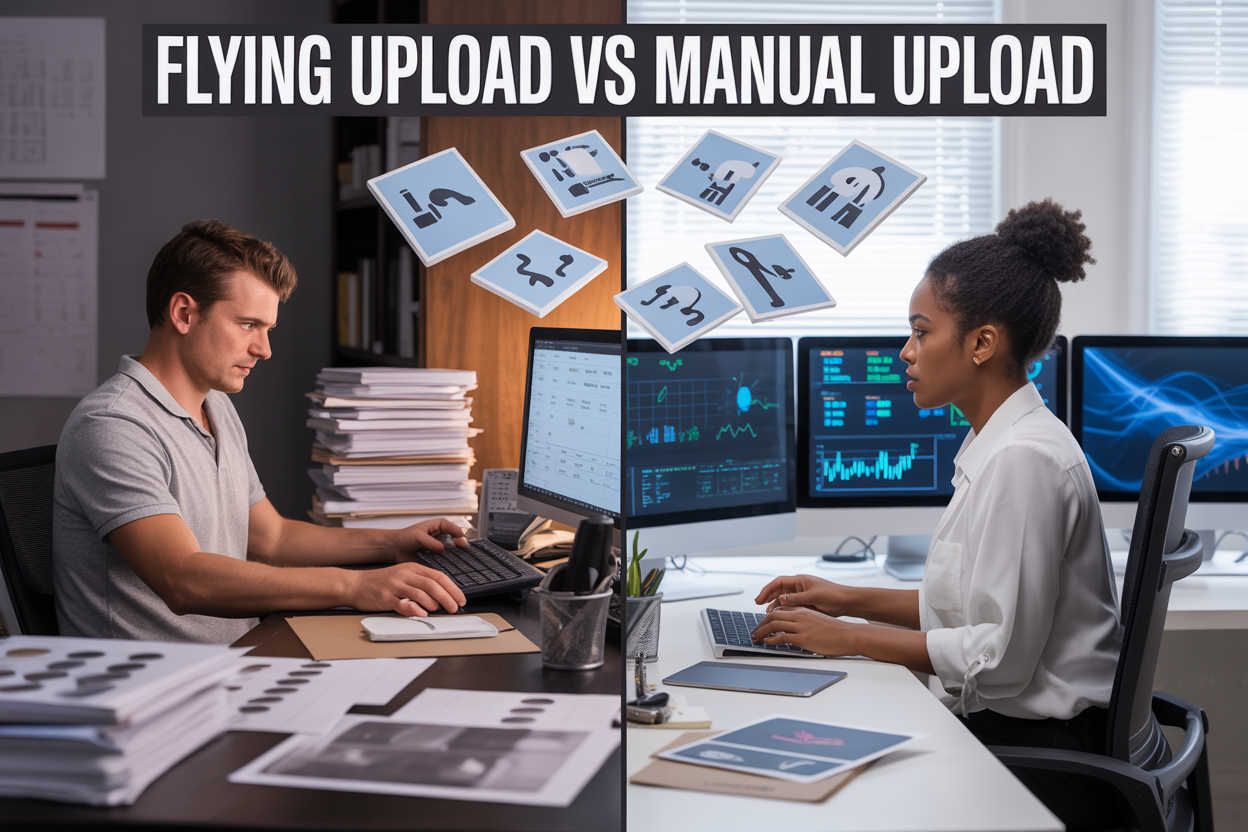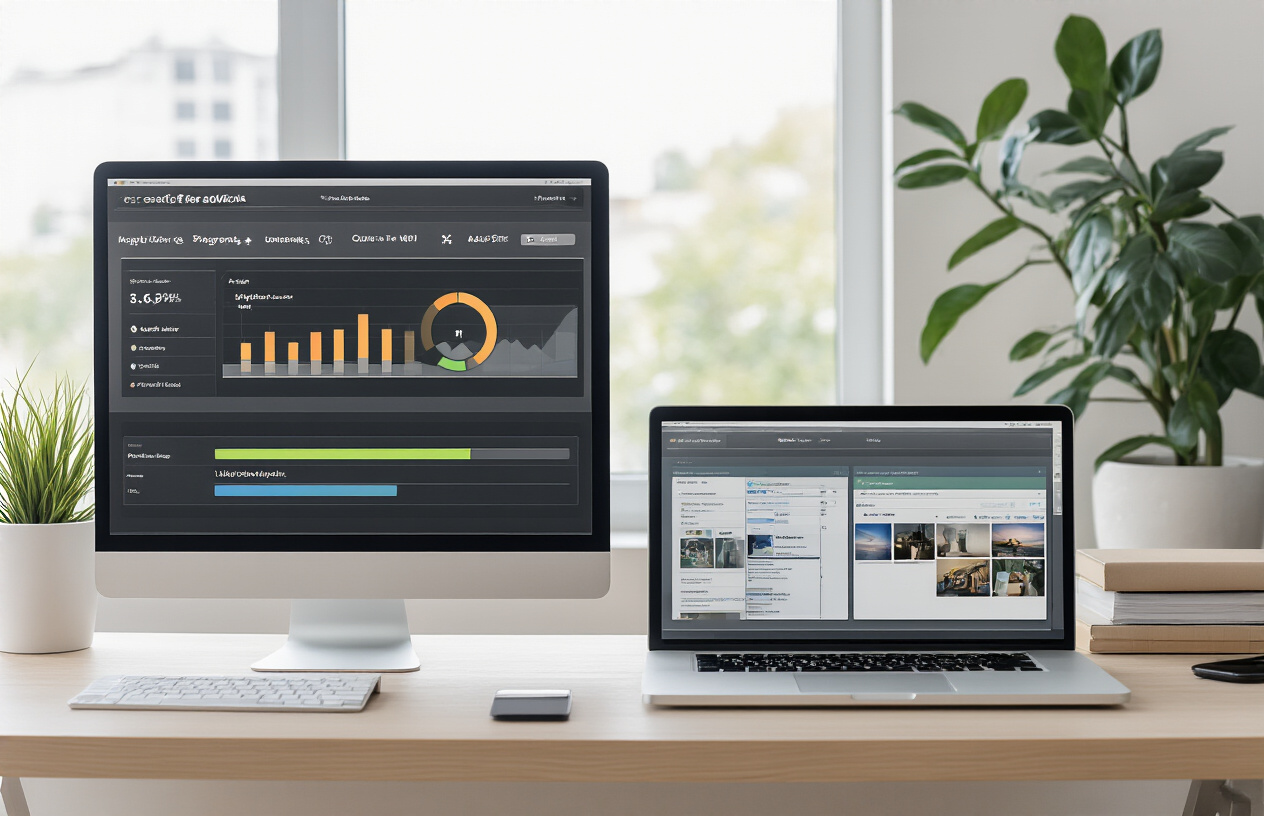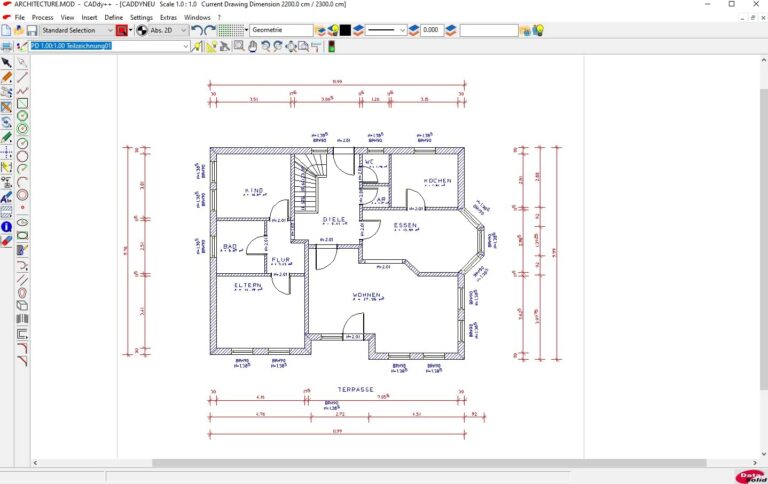Flying Upload vs Manual Upload: Which Upload Method Actually Saves POD Sellers Time and Money?
You’re running a print on demand business, and every minute you spend uploading products is time you could be designing or marketing. The big question: should you stick with manual product upload or jump into automated upload POD tools?
This guide breaks down the real costs and benefits of both POD upload methods for busy sellers like you who want to grow without burning out. You’ll discover which approach actually saves money when you factor in your time value, how each method affects your product quality and accuracy, and which upload strategy sets you up for long-term POD business scalability.
We’ll cover the actual time investment for manual vs bulk upload print on demand workflows, run the numbers on POD automation tools versus doing everything by hand, and show you how your choice impacts your ability to scale beyond just a few products per week.
Understanding Flying Upload and Manual Upload Methods
What Flying Upload Automation Offers POD Sellers
Flying upload automation transforms your POD business by handling bulk uploads across multiple platforms simultaneously. You can upload hundreds of designs to sites like Etsy, Amazon, and Redbubble with just a few clicks. These automated upload POD tools manage product titles, descriptions, tags, and pricing variations while you focus on creating designs. Your workflow becomes streamlined as the software handles repetitive tasks, reducing manual errors and saving hours of tedious work daily.
Traditional Manual Upload Process Breakdown
Manual product upload time requires you to individually create each listing across every platform. You’ll spend time writing unique descriptions, selecting categories, setting prices, and uploading images for each design variant. This POD upload method demands your constant attention as you navigate different platform interfaces, copy-paste information, and manually adjust settings. Your daily output becomes limited by how quickly you can complete each step, often restricting you to uploading just a handful of products per day.
Key Differences in Workflow and Control
The flying upload vs manual upload comparison reveals distinct workflow patterns that impact your POD seller efficiency. Manual uploads give you complete control over every detail but require significant time investment per product. Flying upload automation sacrifices some granular control for speed and volume, allowing you to process entire design collections quickly. Your choice between POD upload methods depends on whether you prioritize detailed customization or rapid scaling of your print on demand business operations.
Time Investment Analysis for Each Upload Method
Hours Saved Through Automated Flying Upload Systems
Your automated flying upload system can save you 6-8 hours per 100 products compared to manual methods. When you upload manually, each product takes 10-15 minutes including design adjustments, description writing, and tag optimization. Flying upload cuts this to 2-3 minutes per product by pre-populating fields and batch processing your designs. You’ll complete what used to take a full workday in just 2-3 hours.
Manual Upload Time Requirements Per Product
Manual product upload demands 10-15 minutes of focused attention per item. You’ll spend 3-4 minutes uploading your design files, another 4-5 minutes crafting product titles and descriptions, and 2-3 minutes selecting categories and tags. Factor in platform loading times and occasional errors that require re-uploading, and your time investment quickly adds up. During peak uploading sessions, you might find yourself spending entire days just getting products live.
Scaling Impact on Time Management
Your time challenges multiply exponentially as you scale your POD business. When you’re uploading 10 products, manual methods feel manageable at 2-3 hours total. But scaling to 100 products means 15-20 hours of upload work, and 1,000 products could consume your entire month. Flying upload systems maintain consistent processing speeds regardless of volume, letting you upload hundreds of products in the same timeframe you’d manually process dozens.
Long-term Time Efficiency Gains
Your efficiency gains compound over time with automated upload methods. While manual uploading keeps you tied to repetitive tasks, flying upload frees up 20-30 hours weekly that you can redirect toward design creation, market research, and business strategy. Over a year, you’ll reclaim 1,000+ hours – equivalent to adding 6 months of productive time to your business calendar. This time freedom becomes your competitive advantage in the fast-moving POD marketplace.
Cost Comparison Between Upload Methods
Flying Upload Software Subscription Costs
Your monthly subscription fees for flying upload software typically range from $29 to $199, depending on features and upload volumes. Most POD automation tools offer tiered pricing based on monthly uploads, with basic plans covering 500-1,000 products and premium plans handling unlimited uploads. You’ll also encounter one-time setup fees or annual discounts that can reduce your overall costs.
Manual Upload Hidden Labor Expenses
Your manual upload process carries significant hidden costs beyond just time spent. You’re paying for data entry mistakes that require corrections, the mental fatigue from repetitive tasks, and the opportunity cost of not focusing on creative work or marketing. When calculated at minimum wage rates, your labor costs for manual uploads can easily exceed $15-25 per hour of actual uploading time.
Opportunity Cost of Time Investment
Every hour you spend manually uploading products is time you can’t spend on design creation, market research, or customer acquisition. Your creative energy gets drained by repetitive tasks instead of being channeled into profit-generating activities. POD sellers using manual methods often find themselves working longer hours while generating less revenue compared to those who automate their upload processes.
Break-even Point Analysis for POD Businesses
You’ll typically break even on flying upload software within 2-3 months if you’re uploading more than 100 products monthly. Calculate your current time investment in manual uploads, multiply by your hourly rate, and compare against subscription costs. Most POD businesses uploading 50+ designs weekly find that automated solutions pay for themselves through increased productivity and reduced errors, allowing you to scale your business faster while maintaining better work-life balance.
Quality Control and Accuracy Considerations
Error Prevention in Automated vs Manual Systems
When you’re choosing between flying upload vs manual upload methods, error rates become a critical factor. Manual uploads give you complete control over every product listing, letting you catch typos, incorrect tags, or mismatched designs before they go live. Your attention to detail prevents costly mistakes that could damage your brand reputation. Automated systems, while faster, can propagate errors across hundreds of listings if your templates contain mistakes. You’ll need robust quality checks in your POD automation tools to prevent bulk errors from reaching your customers.
Design and Listing Quality Management
Your design quality suffers differently with each POD upload method. Manual uploads allow you to customize each listing’s title, description, and tags for maximum appeal, giving you better conversion rates. You can adjust mockup images and ensure each design looks perfect on your chosen products. Flying upload systems often use standardized templates that might not showcase your designs optimally. Your listing quality depends heavily on how well you’ve prepared your templates and whether your automated system can handle variations in design dimensions and product specifications across different platforms.
Platform-Specific Requirements Handling
Each print on demand platform has unique requirements that impact your upload strategy. When you manually upload, you can tailor each listing to match platform-specific guidelines for titles, tags, categories, and image requirements. Your manual approach ensures compliance with each marketplace’s rules, reducing the risk of listing rejections. Automated upload POD systems struggle with platform variations unless you’ve configured them perfectly for each marketplace. You’ll need to regularly update your automation settings as platforms change their requirements, or risk having your bulk uploads rejected or poorly optimized for search visibility.
Business Growth Impact and Scalability
Product Volume Capacity Differences
When you’re scaling your POD business, flying upload methods handle thousands of products in a single day while manual uploads cap you at 20-50 items maximum. Your automated upload POD approach means uploading 500 designs across multiple platforms takes just hours instead of weeks. Manual uploads create bottlenecks that prevent you from capitalizing on trending niches or seasonal opportunities.
Multi-Platform Management Efficiency
Your POD automation tools let you push the same design to Etsy, Amazon, Redbubble, and Society6 simultaneously with one click. Manual uploads force you to recreate listings individually on each platform, eating up precious time you could spend creating new designs. Flying upload vs manual upload efficiency becomes crystal clear when managing 10+ platforms – automation saves you 80% of your listing time.
Revenue Generation Speed Comparison
Your revenue potential skyrockets when you can launch 100 new products weekly versus 10 with manual methods. Bulk upload print on demand strategies get your designs live faster, capturing sales while trends are hot. Your competitors using manual uploads miss time-sensitive opportunities while you’re already generating income from rapid market entry.
Competitive Advantage in Market Timing
Your POD seller efficiency determines whether you catch viral trends or watch them pass by. Flying upload methods position you first in emerging niches while manual uploaders are still creating their third listing. Your automated systems mean responding to market demands within hours, not days, giving you the edge that separates profitable sellers from struggling ones.
Flying upload and manual upload each have their place in your POD business, but the numbers don’t lie. Flying upload saves you hours of repetitive work and reduces long-term costs through automation, while manual upload gives you complete control over every design detail. Your choice depends on where you are in your business journey and what matters most to you right now.
If you’re serious about scaling your POD business and want to free up time for creating new designs or marketing, flying upload is your best bet. The initial investment pays off quickly when you’re uploading dozens of designs regularly. But if you’re just starting out or working with a small catalog where quality control is everything, manual upload might be the smarter move until you’re ready to automate and grow.








